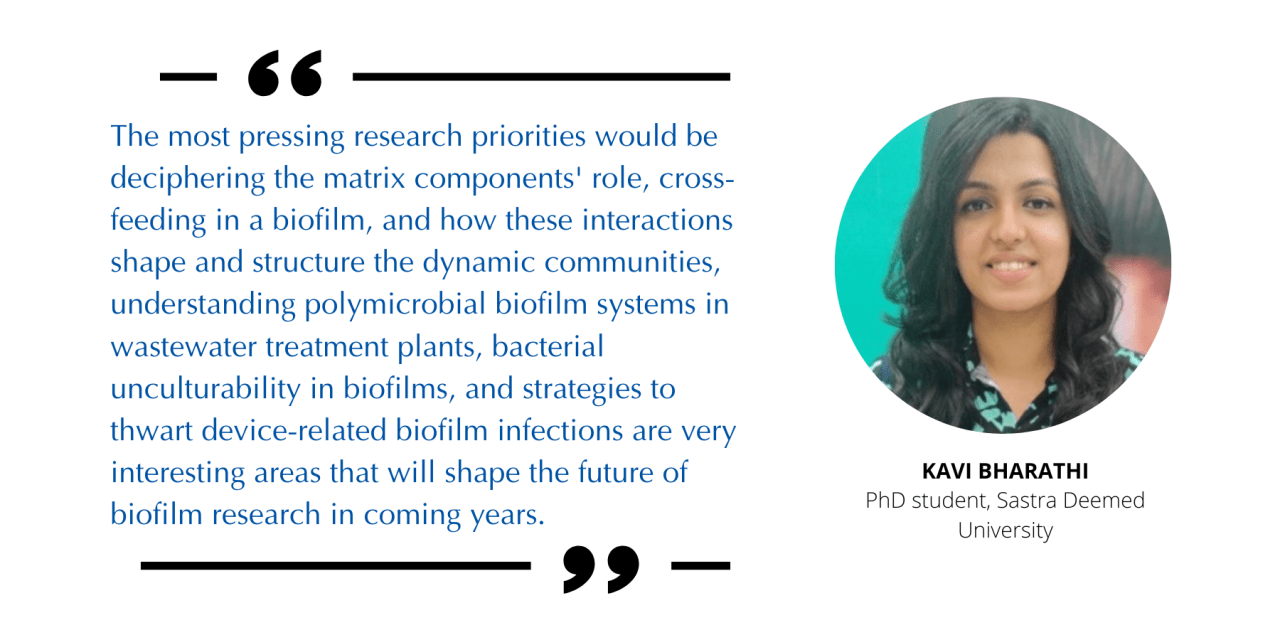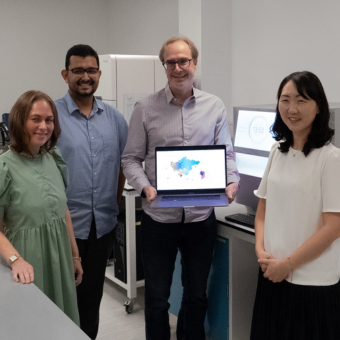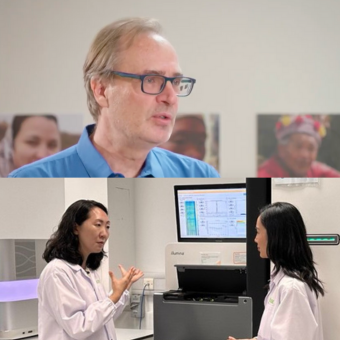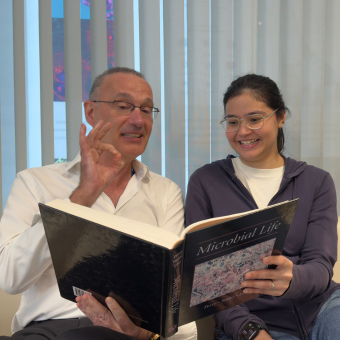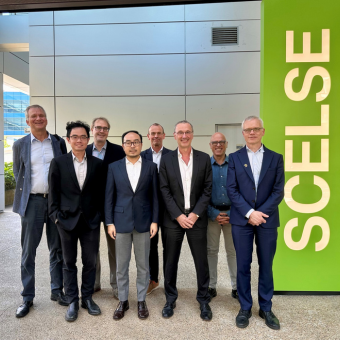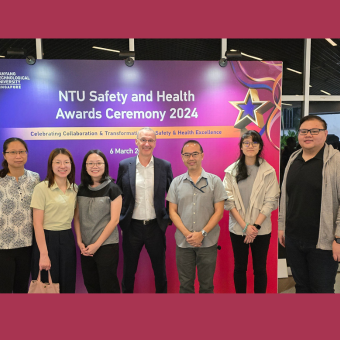Biofilm Matrix Symposium: Insights from a PhD student
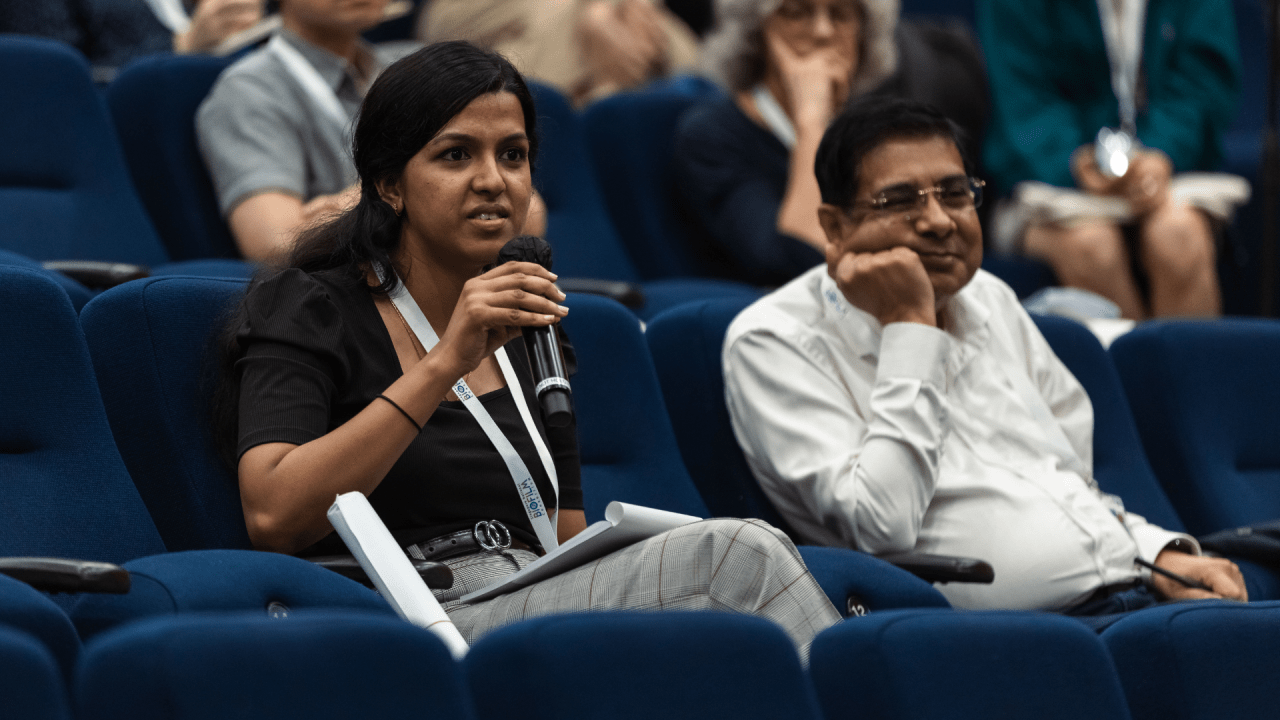
All the way from India’s SASTRA Deemed University, Kavi Bharathi (left), shares what she gleaned from this event.
- Featured
- 14 Apr 2024
Co-organised by SCELSE and Singapore National Biofilm Consortium, the Biofilm Matrix Symposium, held on 6-8 March 2024, kicked off with an exclusive tour of one of Singapore’s water reclamation plants, followed by keynotes and invited talks by renowned biofilm experts.
1. Could you give us an overview of this three-day symposium?
Day 1 of the symposium kicked off with a visit to PUB’s Ulu Pandan Water Reclamation Plant where the PUB staff emphasised the importance of water treatment and recycling through its slogan “Make every drop count.” The tour showcased innovative infrastructure, where my personal favourite was the pink-and-blue coloured buildings designed by female engineers. As we went about the tour, the scientists shared more about the innovative water treatment processes. Overall, the tour highlighted the importance of water treatment to alleviate global water stress.
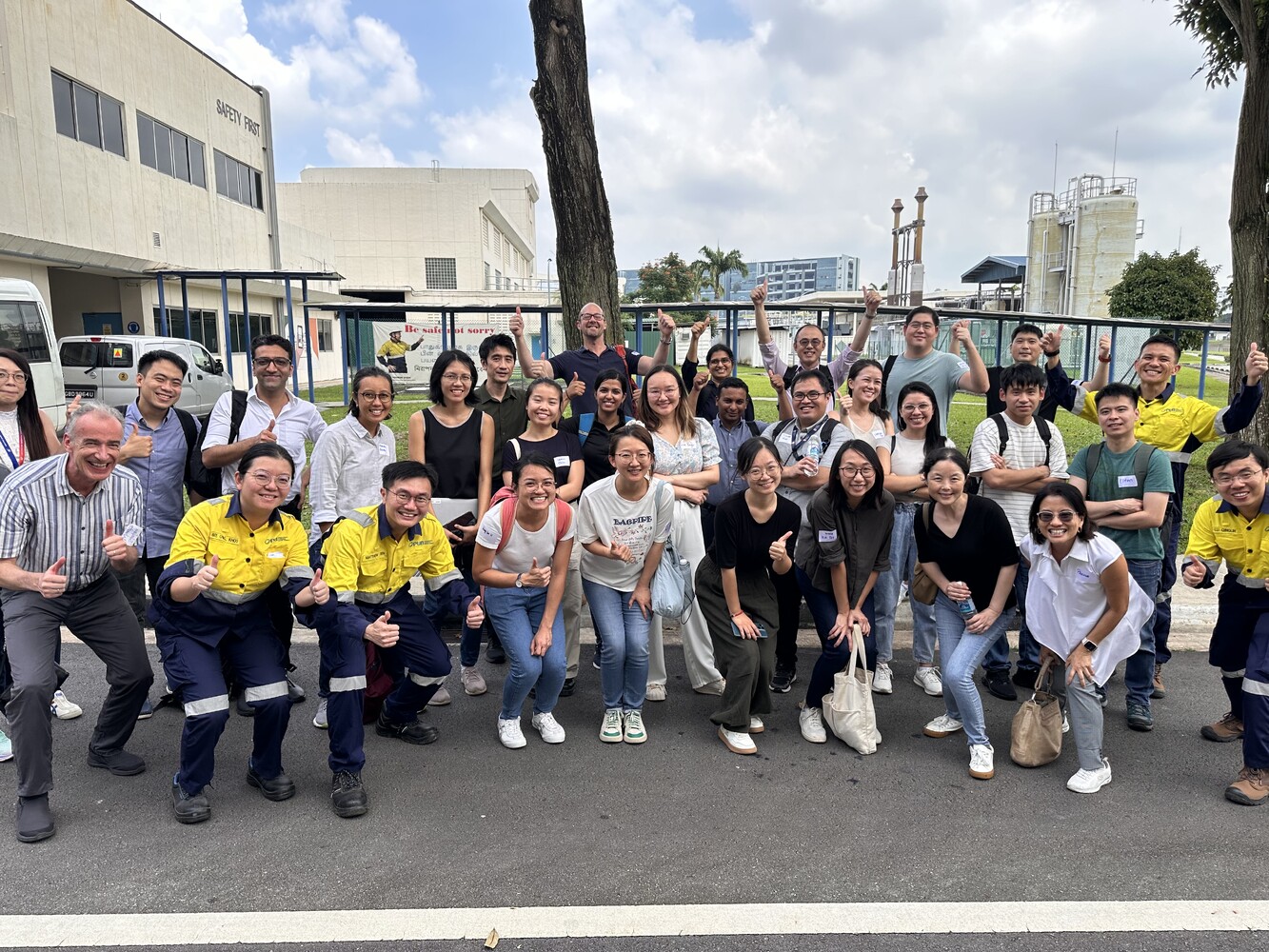
Symposium attendees at the PUB water reclamation plant visit
Day 2 & 3 focused on these themes:
· Biogenesis of the biofilm matrix
· Biofilm matrix structure & function
· Biofilm biophysics
· Biofilm matrix control strategies
Day 2: Focusing on theme of “Biogenesis of the biofilm matrix”, the professors highlighted the multifunctional role and forms of eDNA in a biofilm and autolytic programmed cell death in biofilms, giving us insights on how these structures define the biology of bacteria in biofilms, engineering biofilm matrix for bioremediation, and recovery.
Presentations extended to diverse applications such as food spoilage prevention, anaerobic reactor optimisation, sludge treatment, and innovative strategies for chronic wound management. Industry speakers including vascular surgeon Dr Joseph Lo who underscored the challenges faced by clinicians in biofilm diagnosis and treatment of biofilm-related infections.
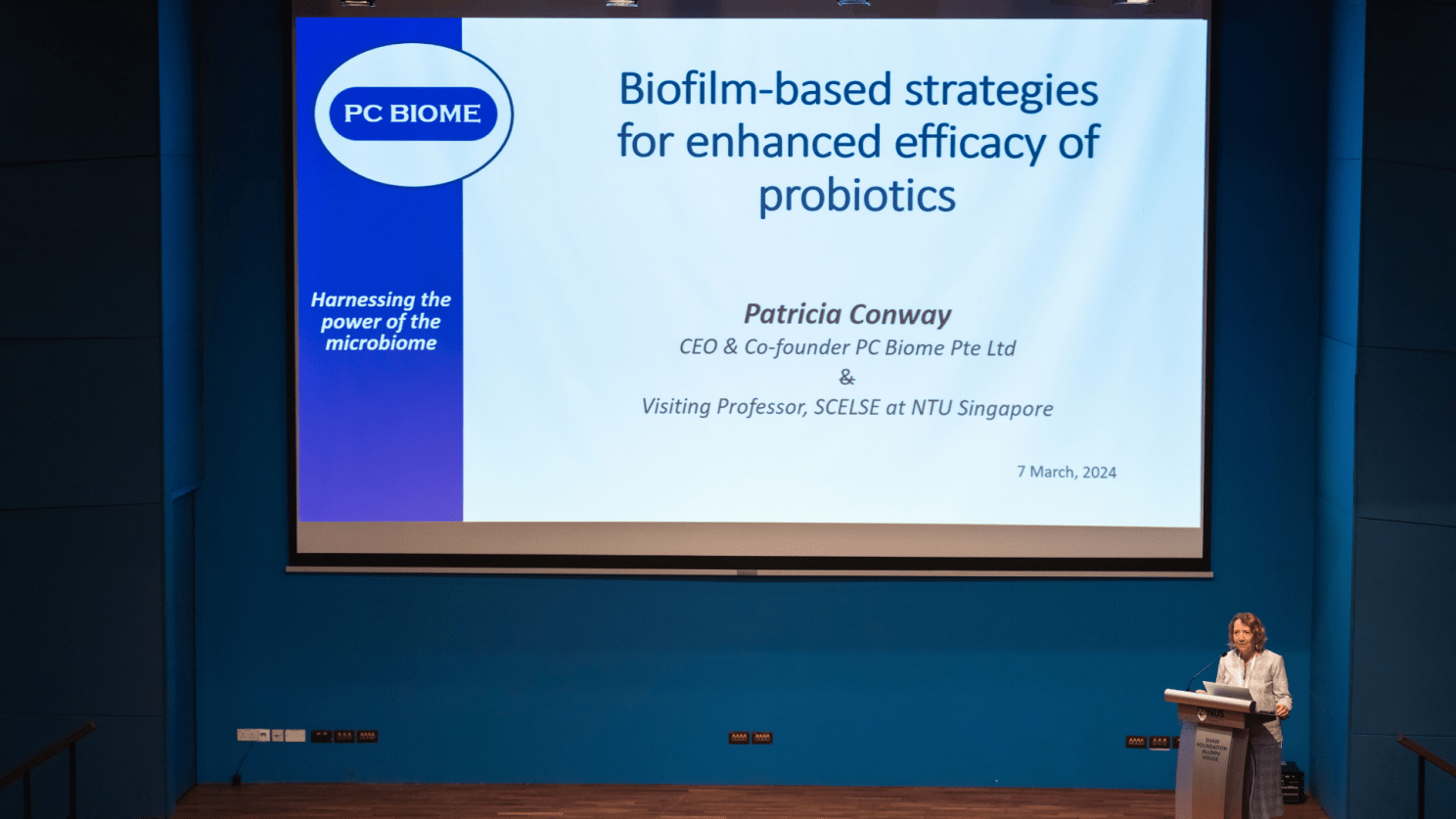
Prof Patricia Conway highlighted the biofilm-based strategies to increase probiotic efficacy. Photo: SNBC
Post-lunch sessions focused on “Biofilm matrix structure & function”, where professors introduced biofilm-bacteriophage dynamics, studying bacterial interactions using bacterial cellulose, followed by oral presentations on biofilm matrix composition and the role of RNA in Pseudomonasbiofilms. Following this were the forum group discussions on the themes of the day “Biogenesis of the biofilm” and “Biofilm matrix structure & function”.
In summary, day 2 of the Biofilm Matrix Symposium highlighted the intricate biogenesis and structural dynamics of biofilms, exploring their multifunctional roles, diverse applications, and challenges in diagnosis and treatment of biofilm-related infections.
Day 3: We explored “Biofilm biophysics” with discussions on bacterial electricity and matrix-derived entropic forces in biofilm assembly and organisation. Followed by oral presentations talking about Bio AFM, single molecule spectroscopy, microscopy, and microcolony diffusion for biofilm study. The industry speakers talked about oral biofilms and engineering biofilms in the restoration of soil and water.
The theme of “Biofilm matrix control strategies” was discussed by Prof Henny van der Mei; and followed by discussions and oral presentations by invited guests on the importance of tackling antimicrobial resistance and treating biofilm infections in ocular infections, medical catheters, and other implants, candidiasis, creating functional biomaterials.
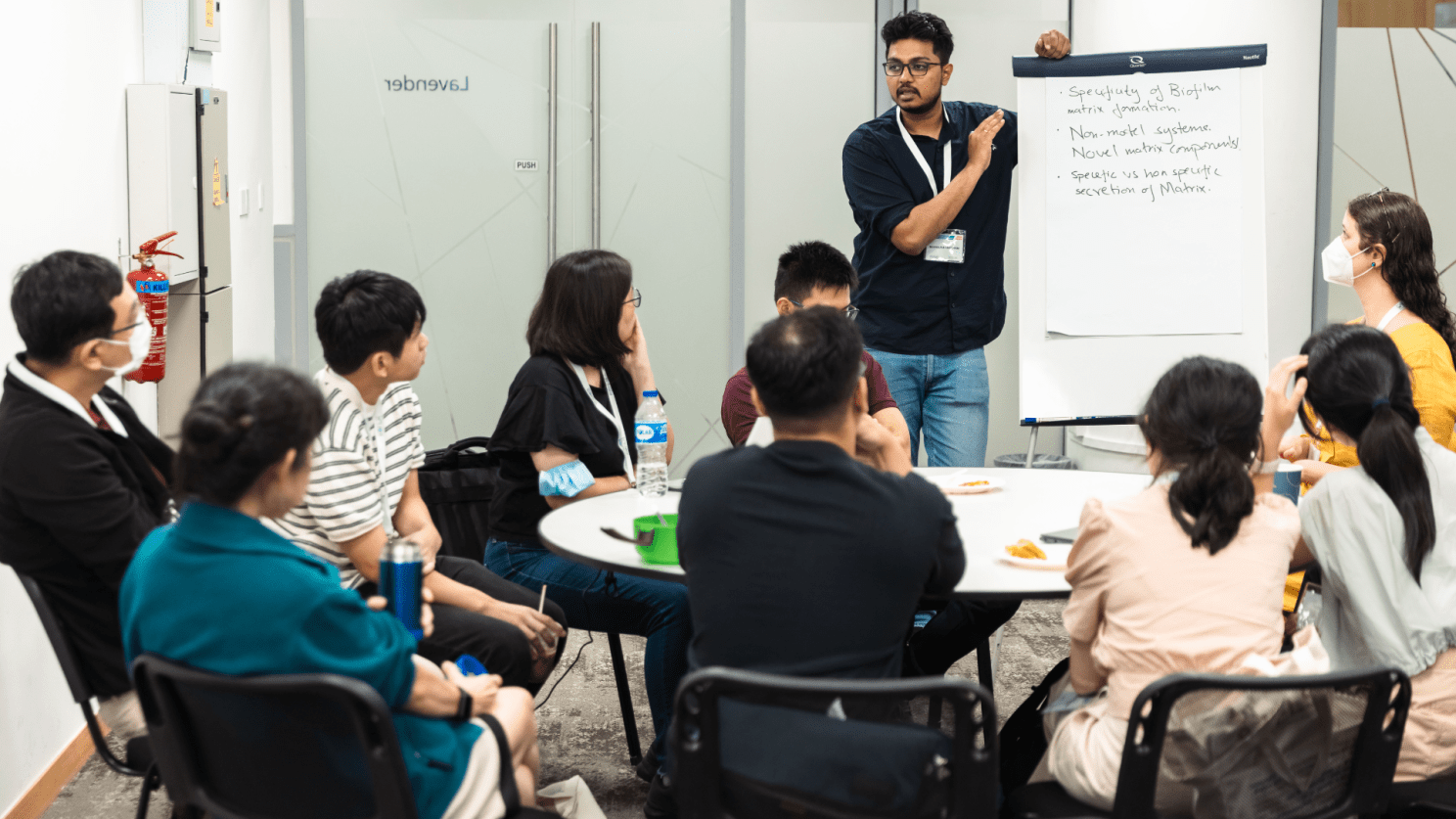
The symposium concluded with highlights of the focus group discussions on exploring biofilm matrix at interfaces, dynamics and combating antimicrobial strategies and developing functional technologies to thwart biofilm infections and effective management.
To sum up, day 3 of the Biofilm Matrix Symposium delved into the biophysics of biofilms, shedding light on bacterial electricity and entropic forces driving assembly, while also addressing advanced techniques like Bio AFM and single molecule spectroscopy. The industry perspectives underscored the need for innovative approaches to combat biofilm-related infections and address global health challenges.
2. What were some of the most notable insights or findings presented at the symposium regarding biofilm formation and function within microbial communities?
Prof Rikke Meyer‘s work on the role of eDNA in biofilm adhesion was truly insightful. She showed that eDNA in biofilms has multiple forms in addition to the canonical B-DNA double helix, eDNA also forms the left-handed Z-DNA, and several Gs coordinate to form G-quadruplexes. Each form has its functions that in turn influence the biofilm structure and physiology.
The other was Prof Cait MacPhee‘s talk on the functional proteins of the matrix of Bacillus subtilis biofilmshaving hydrophobic surfaces. The B. subtilis biofilm switching its surface properties and remodelling its matrix in response to environmental temperatures was remarkably fascinating.
3. Were there any particular challenges or controversies addressed during the symposium related to biofilm research, and if so, what were they, and what potential solutions or pathways forward were discussed?
Heterogeneity is a great challenge faced by biofilm researchers and the development of adept methodologies in the extraction of extracellular polymeric substances (EPS), extracellular DNA and RNA (eDNA, eRNA), and other specific biofilm components is needed.
Dr Joseph Lo highlighted that as a clinician, biofilm diagnosis in disease conditions is a great challenge.
4. In your opinion, what are the most pressing research priorities or areas for future investigation highlighted by the symposium, and how do you envision these insights shaping the field of biofilm research in the coming years?
